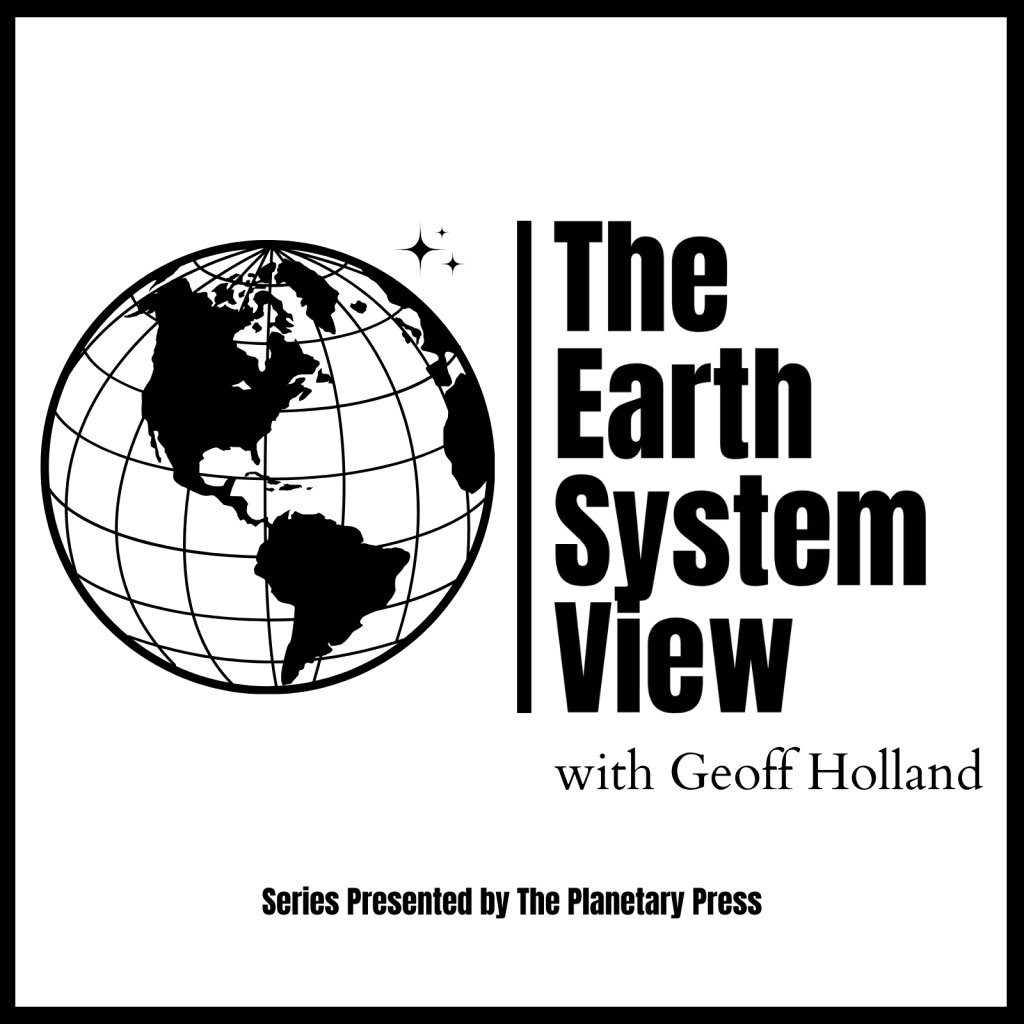
As Chairman of the American Geographical Society, Chris Tucker launched a multi-year strategic dialogue known as Geography 2050, which is focused on the vital trends that will reshape the geography of our planet over the coming decade. Chris’ highly regarded book, “A Planet of Three Billion,” offers a sobering perspective on the impact of humanity’s undeniable overreach early in the 21st century.
Geoffrey Holland: Your book looks at the scientific evidence and concludes that three billion is the number of humans our Earth can support while protecting the viability of the living systems that keep us alive. We are now at eight billion on the way to 10 or more billion humans in coming decades. Can you summarize the state of our Earth’s natural systems at this moment as a consequence of human overreach?
Chris Tucker: Authorities need to focus on the fact that we long ago exceeded our planet’s long-term ecological carrying capacity. Our planet is in an advanced state of ecological overshoot, having accumulated an enormous amount of ecological debt that will require generations to pay down, which is nearly impossible as we continue to grow the human population. Continuing to add 80 million additional people to the planet each year— the equivalent of 10 NYCs or an additional Germany each year— continues undaunted, even as our rate of growth (~one percent annually) is the lowest in centuries and continues to decrease. One percent of eight billion is 80 million annually. This is unsustainable and is crushing our planet in ways that go far beyond carbon emissions and climate change.
So, climate scientists and climate action advocates who say that we should never talk about population dynamics are profoundly incorrect. Climate is a subset of the massive poly-crisis that population growth is driving on our planet. The consequences for our planet and our species will become increasingly dire over the coming decades.

GH: The way we feed ourselves is a big part of the problem. The brand of industrial agriculture that feeds our appetites works for many and minimally or not at all for others. The Earth’s biosphere and its irreplaceable biodiversity are under extreme duress because of the food demands of eight billion people. Can you talk about the industrialization of agriculture and its impact on our Earth’s natural systems?
CT: If we had a world of one billion people, as we did in 1800, and they all ate the modern meat-intensive diets that Westerners do, and it was produced in a fossil-free manner as it was in 1800, we would not be talking about this. But, we have more than eight billion people— a number which continues to grow— and we have an ever-increasing percentage of the global population (not just in the West), as they join the global middle class and become more wealthy, eating more and more meat using modern fossil fuel intensive, ecologically destructive methods.
We raise 70 billion domesticated farm animals each year, with 23 billion in factory farms at any particular moment. And we feed these animals and modern humans with geographically increasing monoculture crops that are displacing more and more of nature. To answer this question with the detail it deserves would require countless pages. But, in short, for those who reduce this issue to “too much consumption,” I say that they need to recognize that we need to bend our consumption curve and our population curve simultaneously.
GH: People in the world’s advanced cultures have reached this moment by exploiting our Earth and its resources without concern for consequence. The evidence tells us we have reached a human reckoning point. Are we at the beginning of the end of life on Earth or, conversely, at the end of the beginning and on to a transformative way of being human?
CT: I don’t think about the challenge in these terms. Here is the blunt reality. Relatively wealthy folks in developed nations with resilient institutions and sufficient resources will do okay as the world faces the poly-crisis. The more marginal and vulnerable a population and the less resilient their nation’s institutions are, the worse off they will be. If you thought the five million Syrians internally displaced and the five million Syrians externally displaced by conflict over the past decade stressed the global system, imagine one billion climate refugees that will be forcefully removed from their communities by climate change— whether sea level rise, aquifer collapse, drought, famine, etc. But those estimates are based on the current population numbers and focused narrowly on the climate crisis, and as we add 80 million additional people to the planet each year, we are largely growing at-risk populations in geographies most at risk from primary, secondary, and tertiary effects of climate change and ecological destruction.
Doctrinaire climate action folks will tell you that a relatively small proportion of the global population is responsible for 90 percent of historic carbon emissions and that the developing world, which is much larger, is only responsible for 10 percent—which is true— and that as a result, population should not be discussed. Please tell them that while their assertion of blame is factually correct, we can only reduce the potential for human misery if we take seriously the half of our planet that we have excluded from the demographic transition that has allowed the developed world to thrive.
This demographic transition was made possible by investing in empowering strategies focused on women and girls. In every geography where women and girls have been educated, empowered, integrated into the workforce, and given access to family planning technologies, we have seen replacement value fertility or below. Of course, investing in the well-being of women and girls is good in and of itself. It is time to invest in a more inclusive demographic transition through investment in women and girls worldwide. In doing so, we could bend the population curve in the coming decades as we face the worst of our planetary poly-crisis.

GH: If humanity is in the midst of remaking ourselves, given that the existential threats we face are global in scale, do they require solutions applied on a global scale?
CT: Again, I am not sure I think about things in those terms. We need solutions at the local, regional, and global scale that recognize the global crises that we face, and the worst of the many local and regional manifestations that will occur. Lots of things need to be done beyond the bending of the global population curve— as I make clear in my chapter entitled “A Cookbook for Global Leaders and Global Citizens.”
However, doing everything else except dealing head-on with our demographic challenges is insufficient. We must ensure that the half of the nations on our planet that were actively excluded from the benefits of demographic transition are no longer excluded, particularly since our global population peak is already projected to occur in the back half of the 21st century. The UN recently downgraded its population projections, with a peak at 10.4B in the 2080s. The Institute for Health Metrics and Evaluation (IHME) projects a peak of 9.7B in 2064.
So, why not hasten the inevitable demographic transition through more robust investment in the well-being and empowerment of women and girls worldwide, leading us to peak earlier at a lower peak population and reduce the destructive pressure we continue to put on our planet? This would enable the half of our planet that has been actively excluded from the benefits of the demographic transition— that wealthy developed nations have enjoyed for decades— to hasten their own demographic transition, accelerating prosperity and well-being around the world.
GH: The Earth System Treaty is a big idea designed to be a beacon that resonates cross-culturally, reflecting the interests of all the world’s people. Can the Earth System Treaty, or something like it, become the social media rallying point that can inspire trust and cooperation among all the world’s people?
CT: Maybe. Ask 15-25 year old females from the developing world what they think. I would like to think they would see value in something akin to your Earth System Treaty, though I am not sure of their opinion of the UN as much of the younger generation’s quandary is driven by the fact that the UN struggles to even implement its own foundational documents such as the UN Convention on the Rights of the Child (1989). The UN is failing to make its own Sustainable Development Goals come true, as the UN is institutionally phobic of discussing the runaway population growth that is undermining the realization of the SDGs. Maybe the next generation needs to think of this more like a grassroots process, rather than pinning their hopes to the UN.
So, perhaps an Earth System Pact that the next generation can ask everyone to sign on to? I would hope that such an Earth System Pact would have the empowerment of women and girls at the center of it, recognizing that it is not only good in and of itself but that it would hasten the inevitable demographic transition, reducing humanity’s numbers and the burden we put on the planet.

GH: Assuming humanity finds a way past our own worst instincts, and we are able to remake ourselves and renew our Earth’s living systems in a sustainable way, what does the best kind of human future look like to you?
CT: The best kind of human future is predicated upon investing in empowering strategies focused on women and girls, with the explicit understanding that the correct levels of investment will enable us to hasten the inevitable demographic transition— rapidly — reducing the ever-increasing amount of ecological pressure we have been putting on our planet over the past century/centuries.
Once a society begins the journey of population decrease, there is an ever-increasing set of per capita housing resources and other resources that can be managed to increase prosperity and well-being while also enabling strategic rewilding that can help the long-term unwinding of the ecological debt/ecological overshoot humanity has foisted on our planet to our own detriment.
Stay tuned for more of The Earth System View series!

Hosted by author and veteran Stanford MAHB journalist Geoff Holland, The Earth System View explores the progressive idea of an Earth System Treaty as a solution to our planetary challenges.







